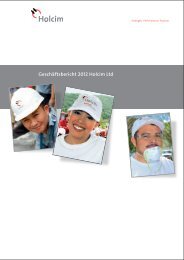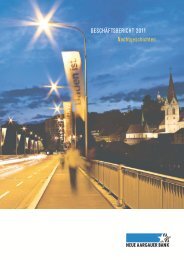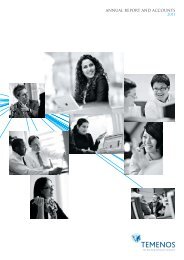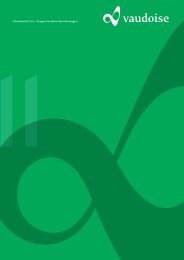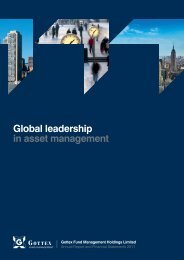download PDF - Newron
download PDF - Newron
download PDF - Newron
Create successful ePaper yourself
Turn your PDF publications into a flip-book with our unique Google optimized e-Paper software.
The following new standards, amendments to standards<br />
and interpretations have been issued but are not<br />
mandatory for the financial year beginning January 1,<br />
2011, and have not been early adopted:<br />
IFRS 7 (Amendments), “Disclosures – Transfers of<br />
financial assets”. The amendment was<br />
intended to simplify the disclosures provided<br />
by reducing the volume of disclosures<br />
around collateral held and improving disclosures<br />
by requiring qualitative information to<br />
put the quantitative information in context.<br />
This standard becomes effective for annual<br />
periods beginning on or after January 1, 2013.<br />
IFRS 9 “Financial instruments”, and its amendments.<br />
The standard issued in November 2009 and<br />
amended in 2010 introduces new requirements<br />
of financial assets and financial liabilities,<br />
including their derecognition. IFRS 9<br />
requires all recognized financial assets and<br />
liabilities that are within the scope of IAS 39<br />
Financial Instruments: “Recognition and<br />
measurement” to be subsequently measured<br />
at amortized cost of fair value. Fair-value<br />
gains or losses must be recognized in profit<br />
or loss, except for the effects of changes in the<br />
liability’s credit risk, which are recognized<br />
directly in other comprehensive income. This<br />
standard becomes effective for annual periods<br />
beginning on or after January 1, 2015.<br />
IFRS 10 “Consolidated financial statements”, replaces<br />
the portion of IAS 27 Consolidated and<br />
Separate Financial Statements that addresses<br />
the accounting for consolidated financial<br />
statements. It also includes the issues raised<br />
in SIC-12 Consolidation – Special Purpose<br />
Entities. IFRS 10 establishes a single control<br />
model that applies to all entities including<br />
special-purpose entities. The changes introduced<br />
by IFRS 10 will require management<br />
to exercise significant judgment to determine<br />
which entities are controlled, and therefore,<br />
are required to be consolidated by a parent,<br />
compared with the requirements that were<br />
in IAS 27. This standard becomes effective<br />
IFRS 11<br />
IFRS 12<br />
IFRS 13<br />
IAS 1<br />
for annual periods beginning on or after<br />
January 1, 2013.<br />
“Joint arrangements”, replaces IAS 31 Interests<br />
in Joint Ventures and SIC-13 Jointly<br />
Controlled Entities – Non-monetary Contributions<br />
by Ventures. IFRS 11 removes the<br />
option to account for jointly controlled<br />
en tities (JCEs) using proportionate consolidation.<br />
Instead, JCEs that meet the definition<br />
of a joint venture must be accounted for<br />
using the equity method. This standard<br />
becomes effective for annual periods beginning<br />
on or after January 1, 2013.<br />
“Disclosure of interests in other entities”,<br />
includes all of the disclosures that were previously<br />
in IAS 27 related to consolidated<br />
financial statements, as well as all of the disclosures<br />
that were previously included in<br />
IAS 31 and IAS 28. These disclosures relate<br />
to an entity’s interests in subsidiaries, joint<br />
arrangements, associates and structured<br />
entities. A number of new disclosures are also<br />
required. This standard becomes effective<br />
for annual periods beginning on or after<br />
January 1, 2013.<br />
“Fair value measurement”, establishes a<br />
single source of guidance under IFRS for all<br />
fair-value measurements. IFRS 13 does not<br />
change when an entity is required to use fair<br />
value, but rather provides guidance on how<br />
to measure fair value under IFRS when fair<br />
value is required or permitted. This standard<br />
becomes effective for annual periods beginning<br />
on or after January 1, 2013.<br />
(Amendments), “Presentation of items of<br />
other comprehensive income”.<br />
The amendments to IAS 1 change the grouping<br />
of items presented in OCI. Items that<br />
could be reclassified (or ‘recycled’) to profit<br />
or loss at a future point in time (for example,<br />
upon derecognition or settlement) would<br />
be presented separately from items that<br />
will never be reclassified. The amendment<br />
affects presentation only and has there no<br />
impact on the Group’s financial position or<br />
46 <strong>Newron</strong> Annual Report 2011




